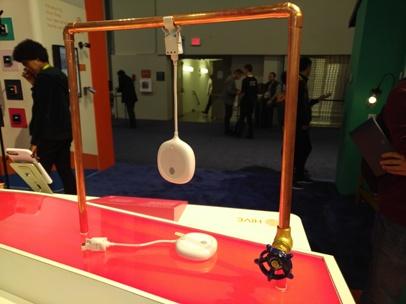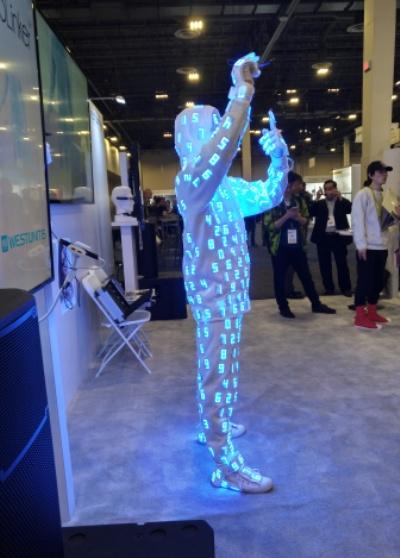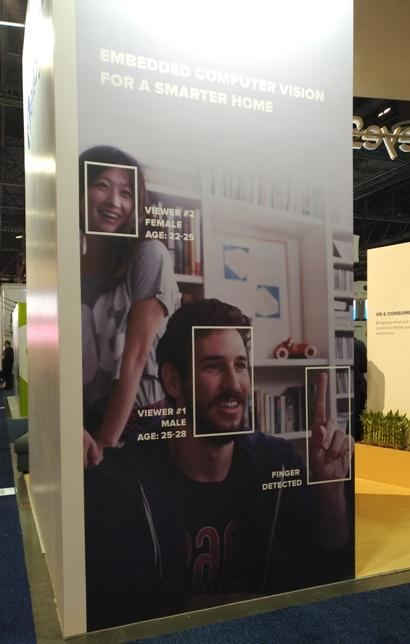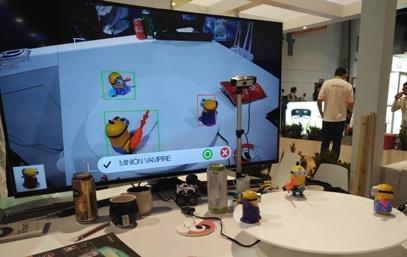By Joshua Seidemann, Vice President of Policy, NTCA
January 11, 2018 – (Las Vegas) I'll be the first to admit that I often raise a few mental eyebrows while wandering the floor at CES. At the same time, however, I also find myself asking what type of specialized benefits various devices might have in rural areas. Sometimes, the answers are clear - telehealth and distance education are two applications that spring to mind. Other times, I need to be pointed in the right direction.
Robots are occupying greater space at CES. It is a broad term, of course, and includes everything from automatic vacuum cleaners and lawn mowers to interactive devices that can respond to voice commands. The incorporation of AI and the use of highly detailed modeling, like Sophia from Hanson Robotics, shoots certain models into the stratosphere, but for now I am focusing on the sort of friendly incarnations, the white plastic forms that have some vaguely human resemblance but which would never be confused with an attempt at accurate anthropomorphism.
The hospitality industry is testing these types of devices, which can do everything from check hotel Wi-Fi signals to deliver room service requests. If you have ever avoided answering the door when housekeeping sends up that forgotten toothpaste (because sometimes we just don't feel like being social), this robot might be for you. But, these devices can also bridge critical needs for the elderly and disabled.
For the purposes of this post, let's rely on statistics that were presented at CES: 12% of the U.S. population reports a disability; 50% of senior citizens report a disability; 25% of disabled persons report that they do not go on-line.
Now, let's revisit the robot. A social services agency in New York conducted a pilot with a dozen users that outfitted homes with smart lamps, thermostats, and other smart devices. The pilot eventually expanded to 90 homes in which persons with a disability live. The disabilities included low vision, genetic tremors, and physical mobility challenges. Users reported greater feelings of independence when using the devices. People who had been unable to operate certain home appliances or fixtures in a typical manner told program managers at the end of the program, "You cannot take this away from me." And, requests for voice activated devices increased.
For me, Alexa is a handy way to make my children roll their eyes; I have a terrible habit of asking Alexa to play classic rock or, when I am in a particularly irritating mood, Top 40 hits from the mid-80s. But, talk about being pointed in the right direction, and a conversation at CES makes me see these devices and related applications in a whole new light.
Beyond the technical achievements, however, remain the very real challenges of facilitating adoption. Complexity, installation and integration can be especially difficult for elderly users. One survey found that complexity ranked higher than cost as a discouragement. But (and this is where partnerships and collaboration come into play), parties with connections to target populations can assist. Communities can recognize which local organizations are best equipped to step up. Meals-on-Wheels agencies can work with broadband providers to facilitate introductions; libraries are community assets that can be leveraged to provide educational opportunities for prospective users.
And, interaction need not be active. Passive monitoring devices are getting more sophisticated. Israeli firm Vayyar has developed sensors that rely on radio waves imparted by the human body. These can track presence and movement in rooms where cameras would not be welcome, such as bedrooms or bathrooms. Importantly, the sensors can also track variations in movement, such as gait, over time. Accordingly, family or a care giver can not only confirm that an elderly person was active during any particular day, but over time can determine whether there are changes to the person's walking: is Grandma moving more slowly? Is Grandma stooped or shuffling?
Activities of daily living (ADL) become more difficult as age-related cognitive decline emerges. Robots, voice-connected devices, and other smart applications can be used to help extend a person's time of independence in his or her home.
That's a pretty good direction in which to be pointed.





